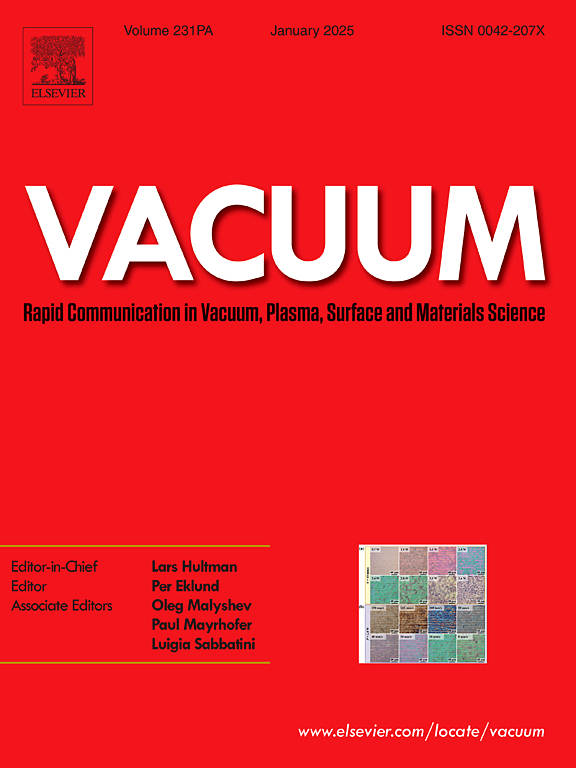Ni and Sb improve the microstructure, mechanical properties, and solder joint reliability of Sn-3.0Ag-0.5Cu alloy
IF 3.8
2区 材料科学
Q2 MATERIALS SCIENCE, MULTIDISCIPLINARY
引用次数: 0
Abstract
In this study, SAC305-0.1Ni and SAC305-0.1Ni-xSb (x = 1.5 wt %, 2.0 wt %, 2.5 wt %) composite solders were fabricated by incorporating Ni and Sb alloying elements into Sn3.0Ag0.5Cu (SAC305) solder. A comprehensive investigation was carried by utilizing X-ray diffraction (XRD), scanning electron microscopy (SEM), differential scanning calorimetry (DSC), microhardness tests, nanoindentation, transmission electron microscopy (TEM), and a universal mechanical testing machine. The effects of Ni and Sb additions on microstructures, thermal properties, wettability, mechanical characteristics, as well as thermal aging, interfacial growth, and mechanical properties of welded joints were systematically explored, and these results were compared with SAC305 solder. The results indicated that the incorporation of Sb and Ni enhanced the microstructure of the solder alloy through the formation of (Cu, Ni)6Sn5 and SnSb phases, leading to a 23.90 % increase in the solder wetted area. Additionally, the formation of (Cu, Ni)6Sn5 and SnSb intermetallic compounds (IMC) increased resistance to dislocation motion, thereby enhancing the mechanical properties of the solder alloys in comparison to SAC305 solder. The creep resistance of the solder alloys was significantly improved, with a corresponding 49.19 % increase in Vickers hardness. During the thermal aging of solder joints, the interfacial growth coefficient decreased, with the SAC305-0.1Ni-2.0Sb joints exhibiting the lowest value at 0.0185. Furthermore, the co-addition of Ni and Sb consistently enhanced the mechanical properties of the welded joints. The average tensile strength of SAC305-0.1Ni-2.0Sb joints reached 77.87 MPa, which represents a 28.45 % increase compared to SAC305 joints. As the Sb content increased, the fracture mode transitioned from brittle fracture to ductile fracture, and eventually to a mixed ductile-brittle fracture.
镍和锑可改善 Sn-3.0Ag-0.5Cu 合金的微观结构、机械性能和焊点可靠性
本研究通过在锡3.0银0.5铜(SAC305)焊料中加入镍和锑合金元素,制备了SAC305-0.1镍和SAC305-0.1镍-xSb(x = 1.5 wt %、2.0 wt %、2.5 wt %)复合焊料。利用 X 射线衍射 (XRD)、扫描电子显微镜 (SEM)、差示扫描量热 (DSC)、显微硬度测试、纳米压痕、透射电子显微镜 (TEM) 和通用机械试验机进行了全面研究。系统地探讨了添加镍和锑对焊接接头的微观结构、热性能、润湿性、机械特性以及热老化、界面生长和机械性能的影响,并将这些结果与 SAC305 焊料进行了比较。结果表明,通过形成(Cu, Ni)6Sn5 和 SnSb 相,Sb 和 Ni 的加入增强了焊料合金的微观结构,使焊料润湿面积增加了 23.90%。此外,(Cu, Ni)6Sn5 和 SnSb 金属间化合物 (IMC) 的形成增加了对位错运动的阻力,因此与 SAC305 焊料相比,提高了焊料合金的机械性能。焊料合金的抗蠕变性显著提高,维氏硬度也相应提高了 49.19%。在焊点的热老化过程中,界面生长系数下降,SAC305-0.1Ni-2.0Sb 焊点的界面生长系数最低,为 0.0185。此外,镍和锑的共同添加持续增强了焊点的机械性能。SAC305-0.1Ni-2.0Sb 接头的平均抗拉强度达到 77.87 兆帕,与 SAC305 接头相比提高了 28.45%。随着锑含量的增加,断裂模式从脆性断裂过渡到韧性断裂,并最终过渡到韧性-脆性混合断裂。
本文章由计算机程序翻译,如有差异,请以英文原文为准。
求助全文
约1分钟内获得全文
求助全文
来源期刊

Vacuum
工程技术-材料科学:综合
CiteScore
6.80
自引率
17.50%
发文量
0
审稿时长
34 days
期刊介绍:
Vacuum is an international rapid publications journal with a focus on short communication. All papers are peer-reviewed, with the review process for short communication geared towards very fast turnaround times. The journal also published full research papers, thematic issues and selected papers from leading conferences.
A report in Vacuum should represent a major advance in an area that involves a controlled environment at pressures of one atmosphere or below.
The scope of the journal includes:
1. Vacuum; original developments in vacuum pumping and instrumentation, vacuum measurement, vacuum gas dynamics, gas-surface interactions, surface treatment for UHV applications and low outgassing, vacuum melting, sintering, and vacuum metrology. Technology and solutions for large-scale facilities (e.g., particle accelerators and fusion devices). New instrumentation ( e.g., detectors and electron microscopes).
2. Plasma science; advances in PVD, CVD, plasma-assisted CVD, ion sources, deposition processes and analysis.
3. Surface science; surface engineering, surface chemistry, surface analysis, crystal growth, ion-surface interactions and etching, nanometer-scale processing, surface modification.
4. Materials science; novel functional or structural materials. Metals, ceramics, and polymers. Experiments, simulations, and modelling for understanding structure-property relationships. Thin films and coatings. Nanostructures and ion implantation.
 求助内容:
求助内容: 应助结果提醒方式:
应助结果提醒方式:


